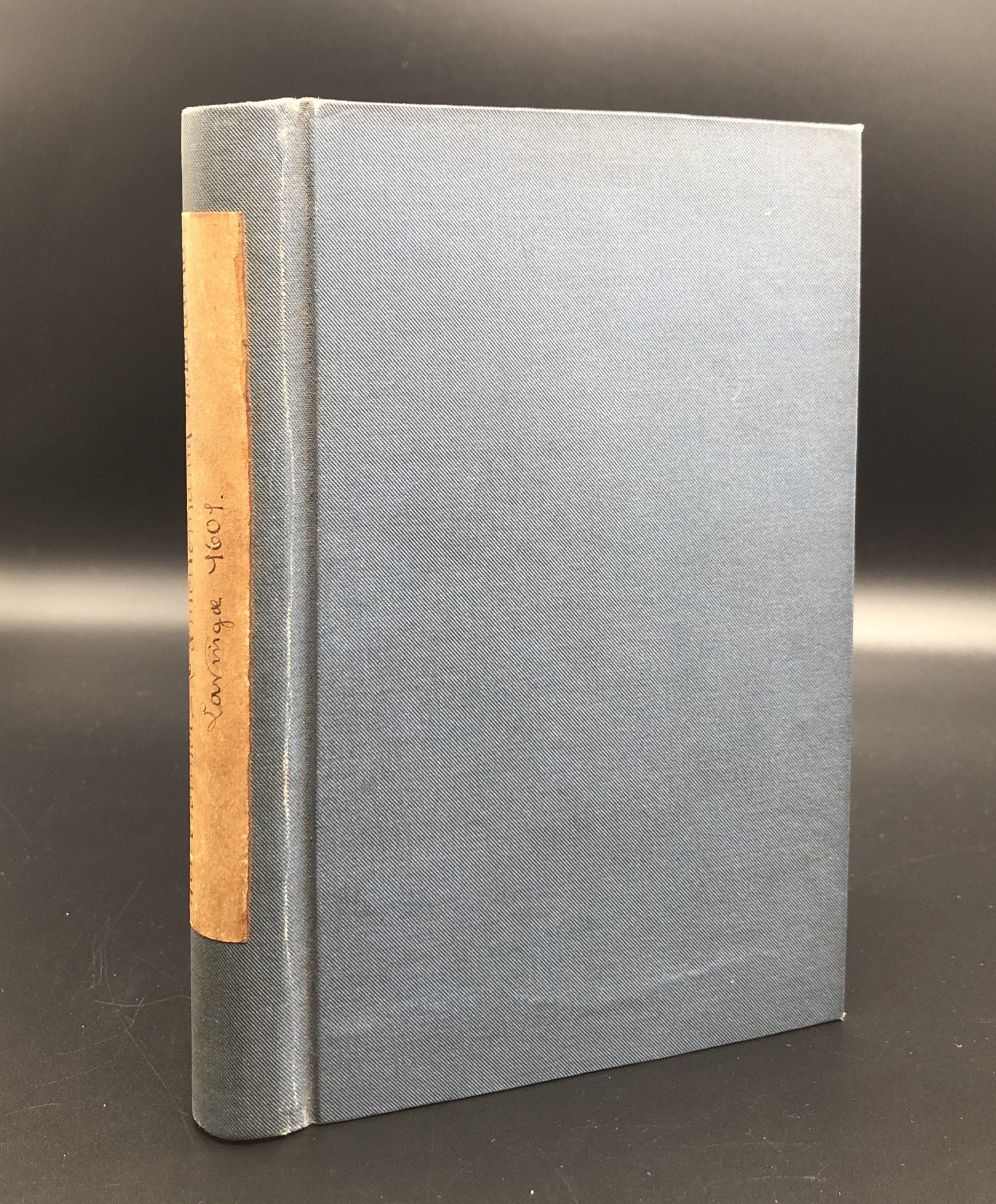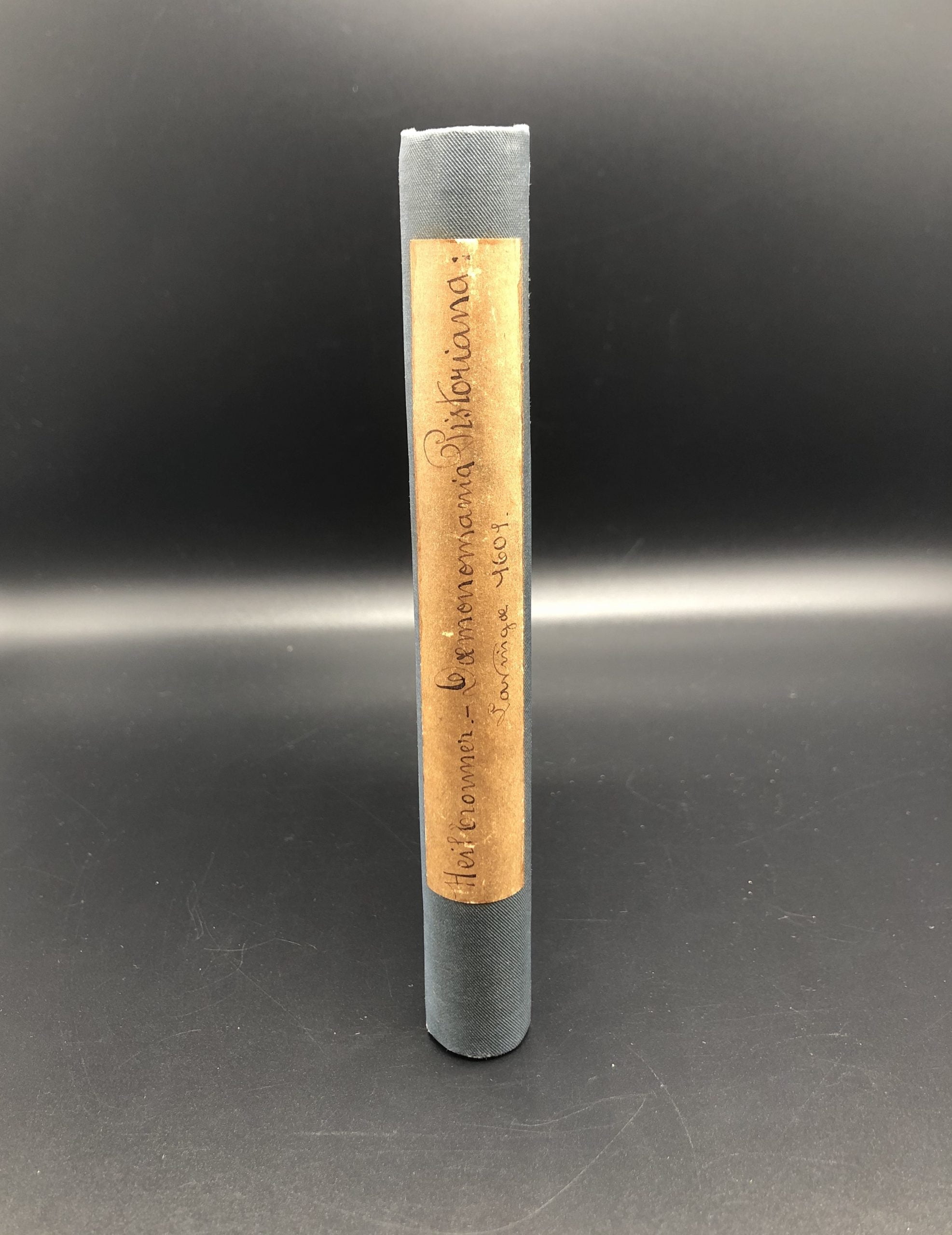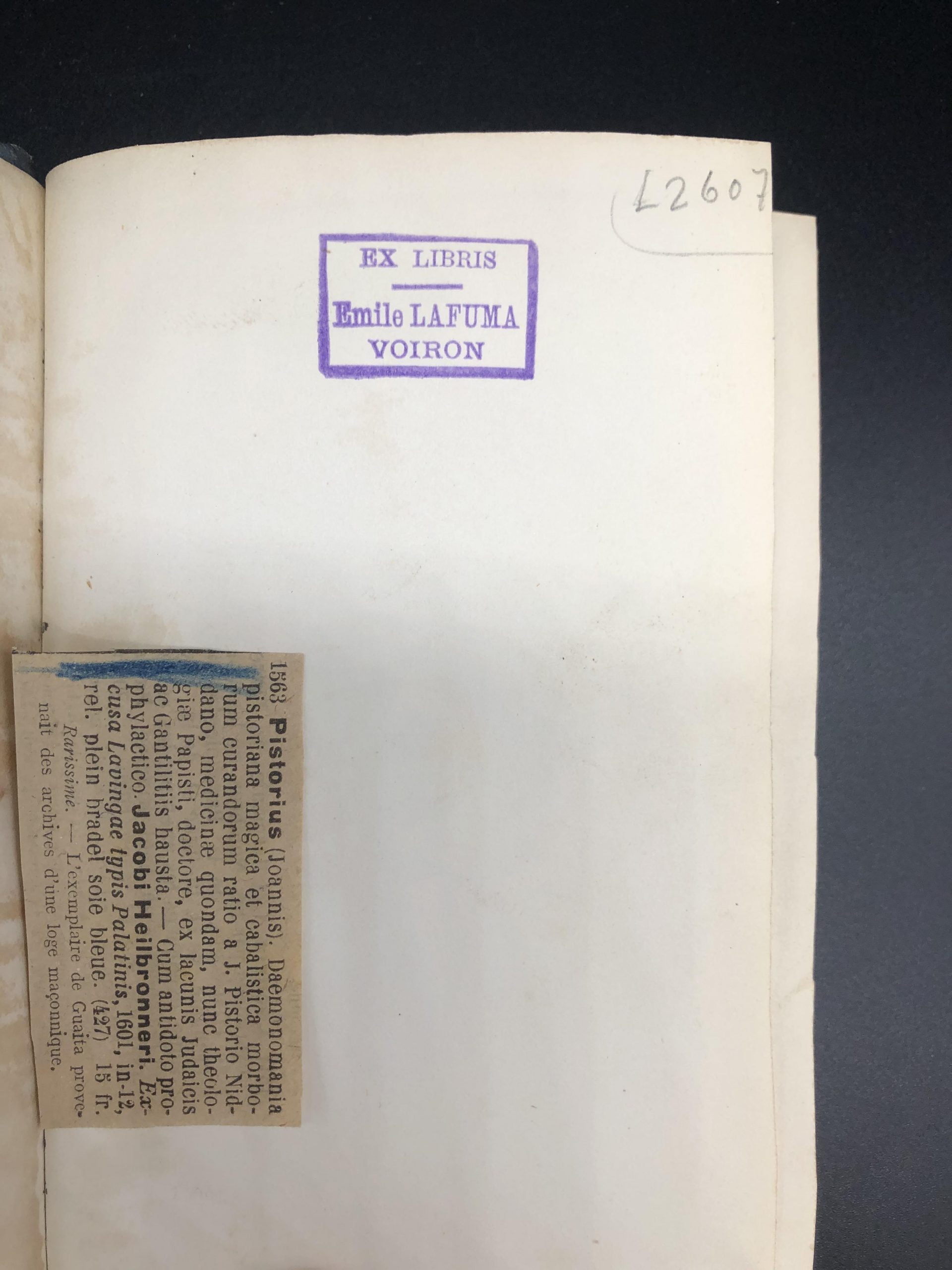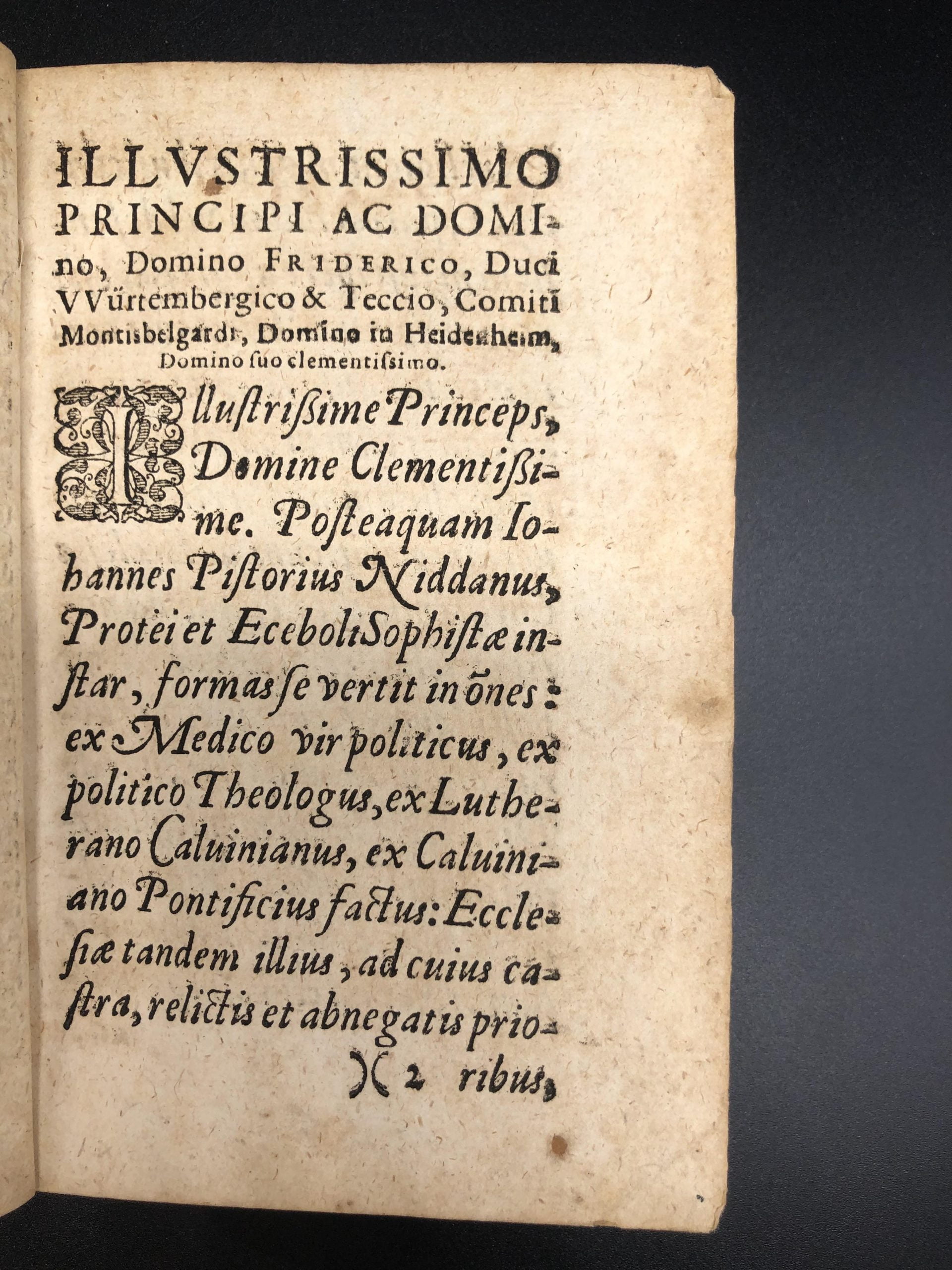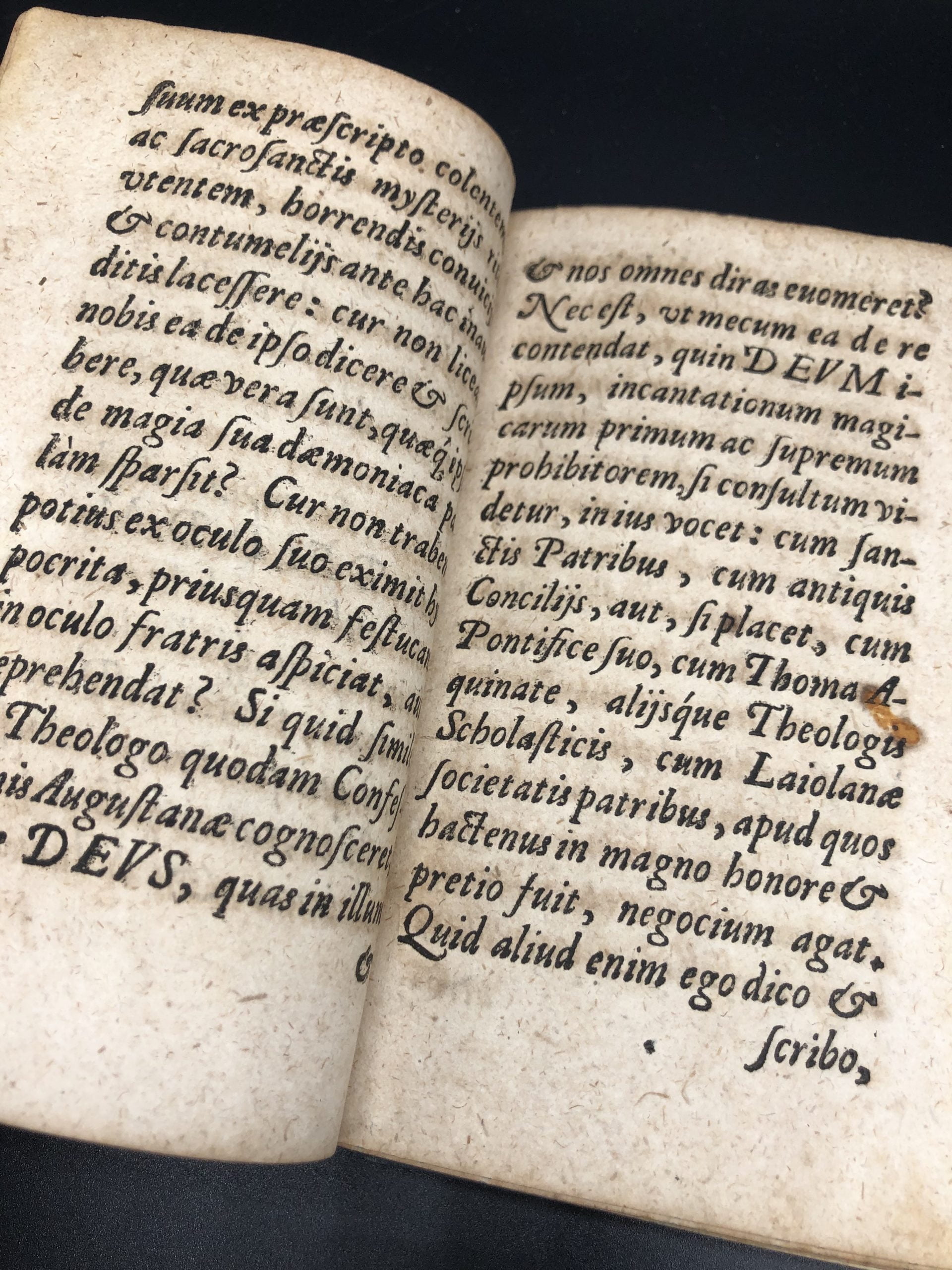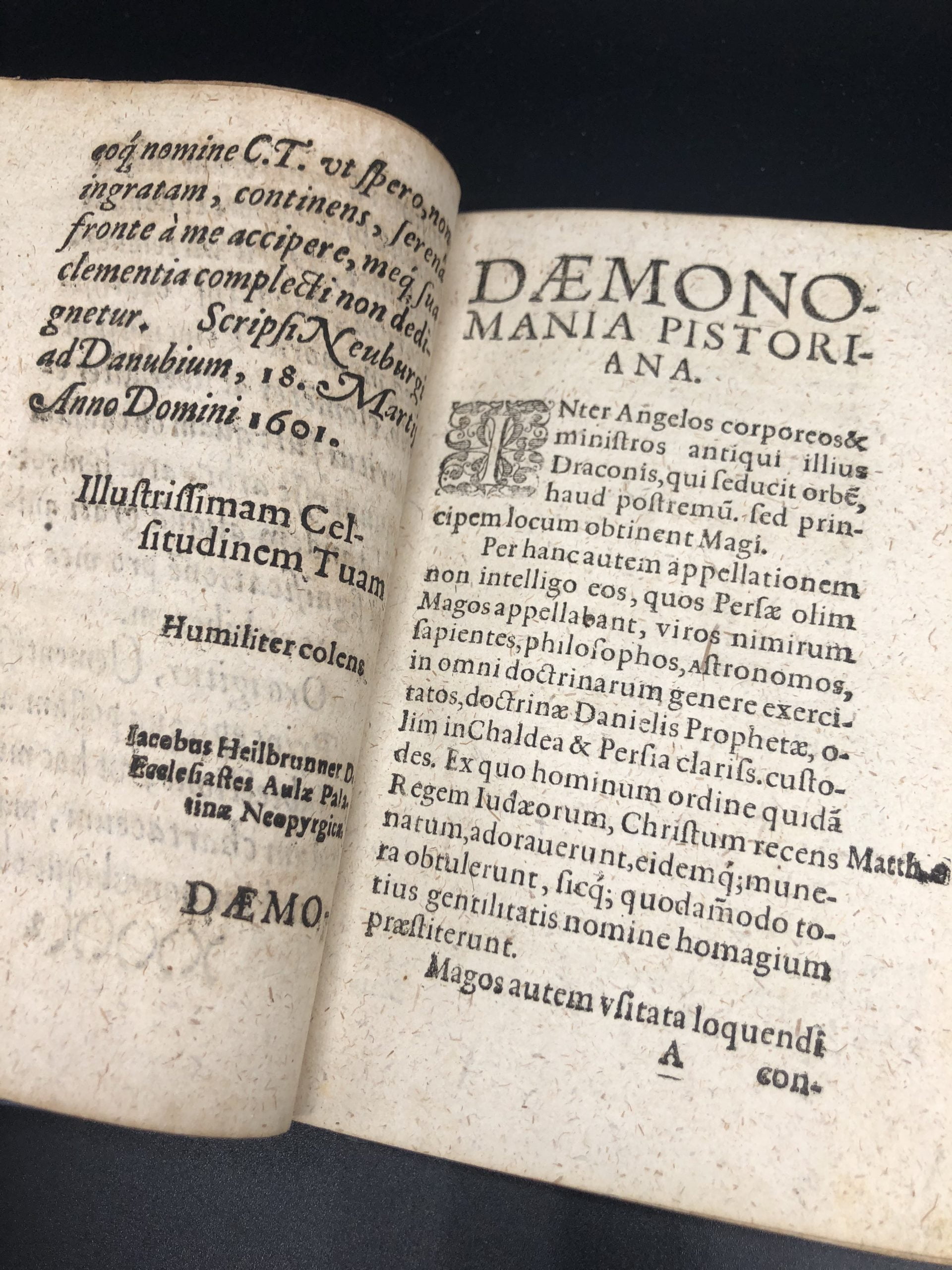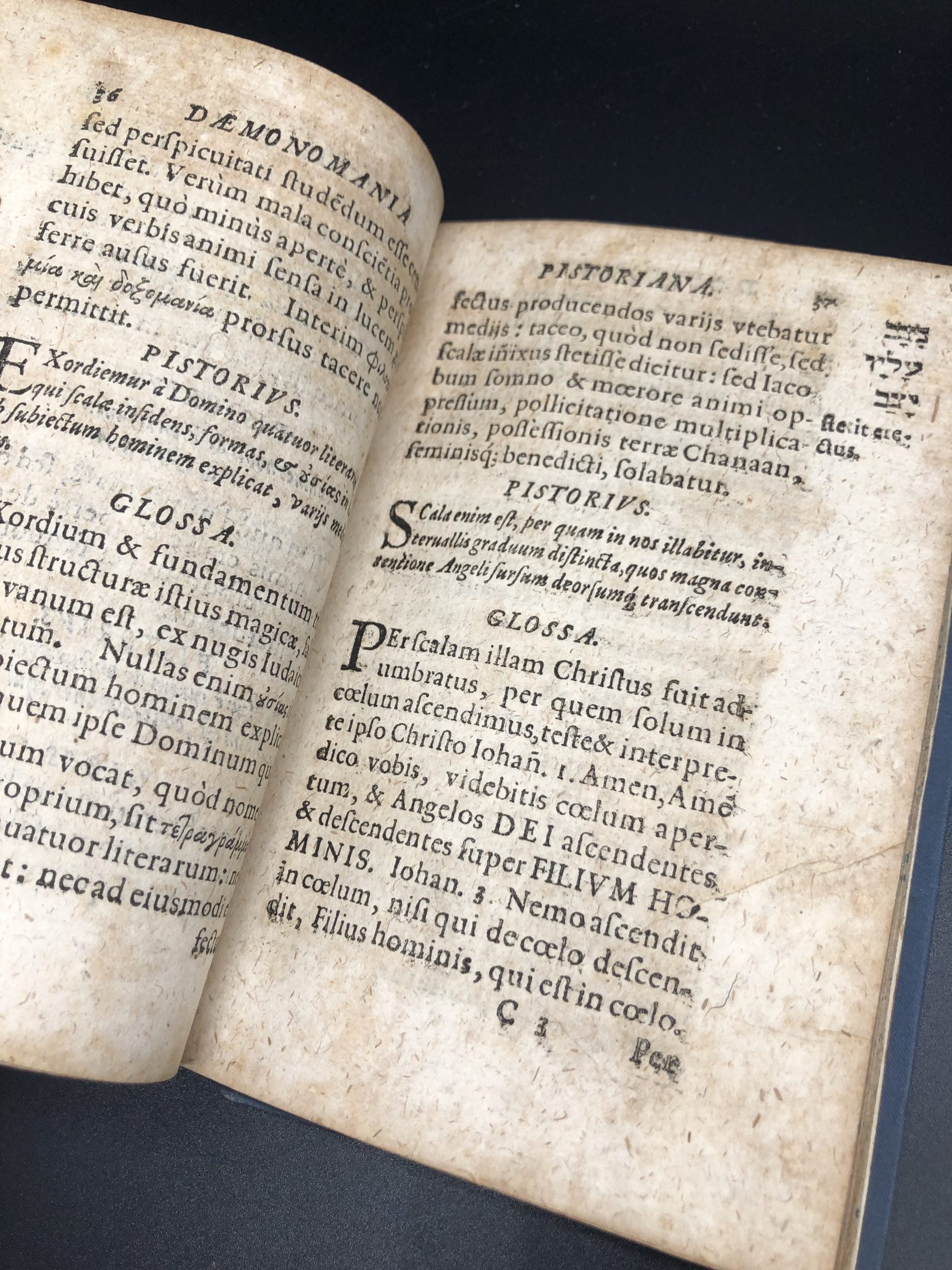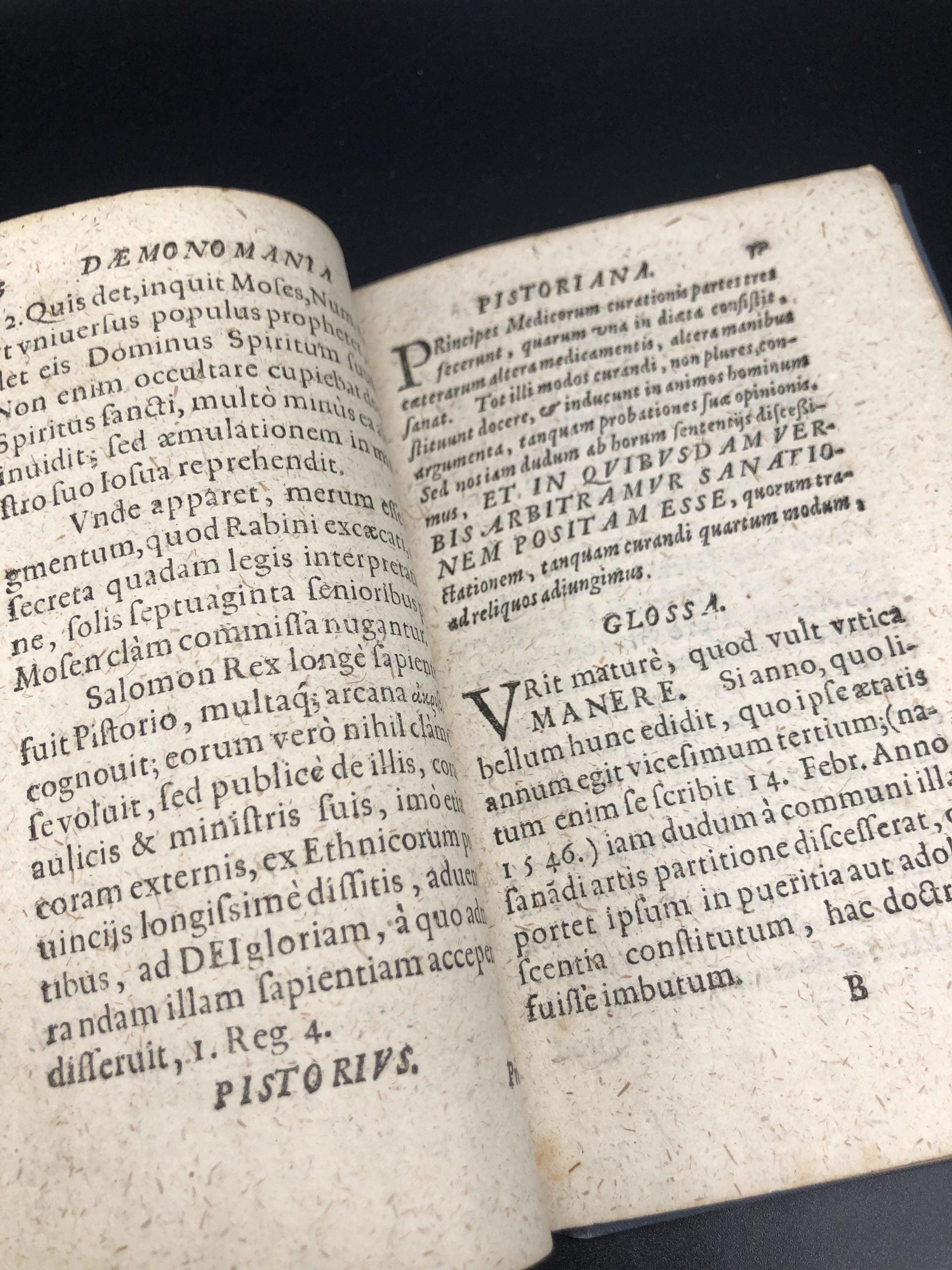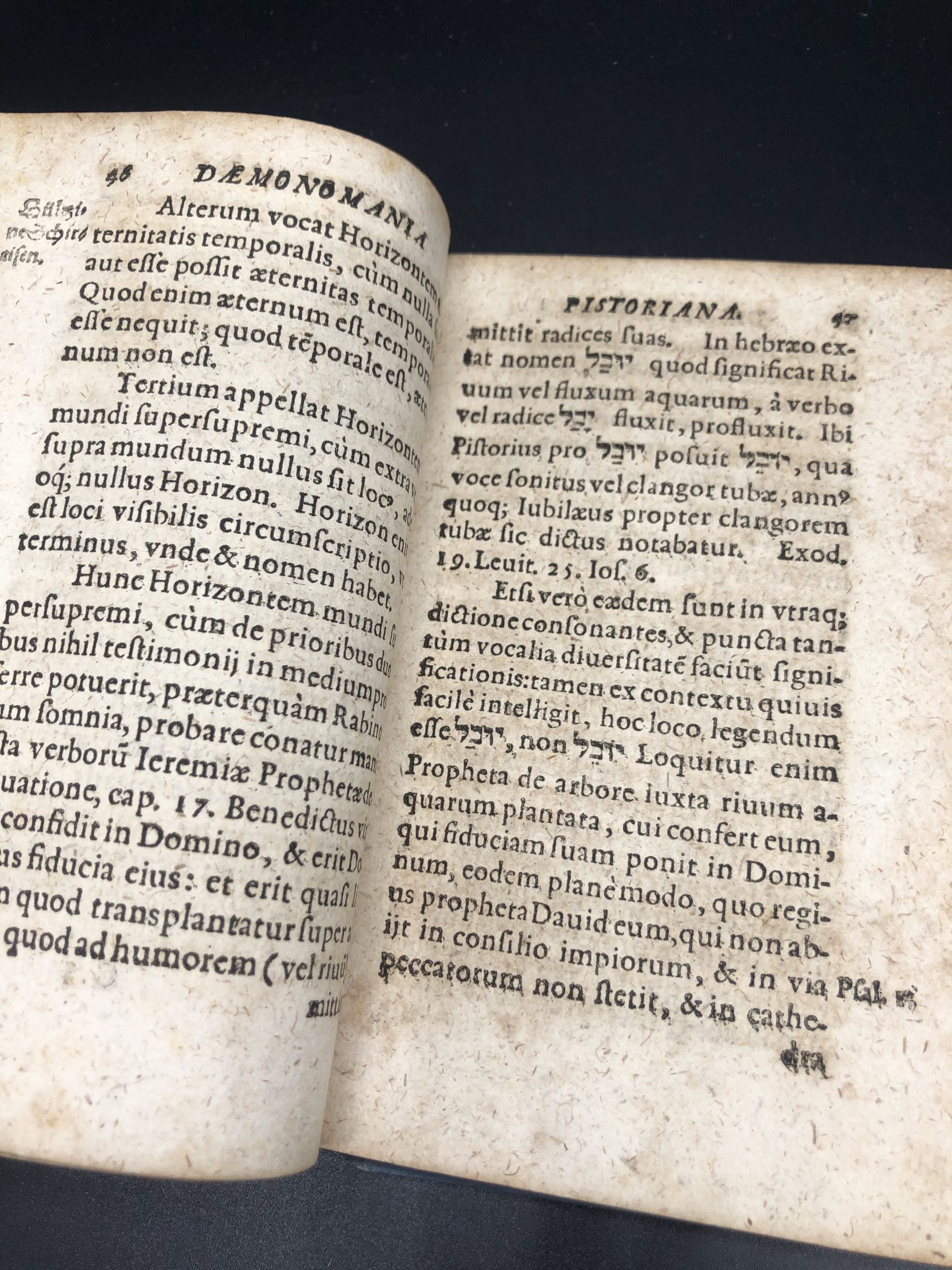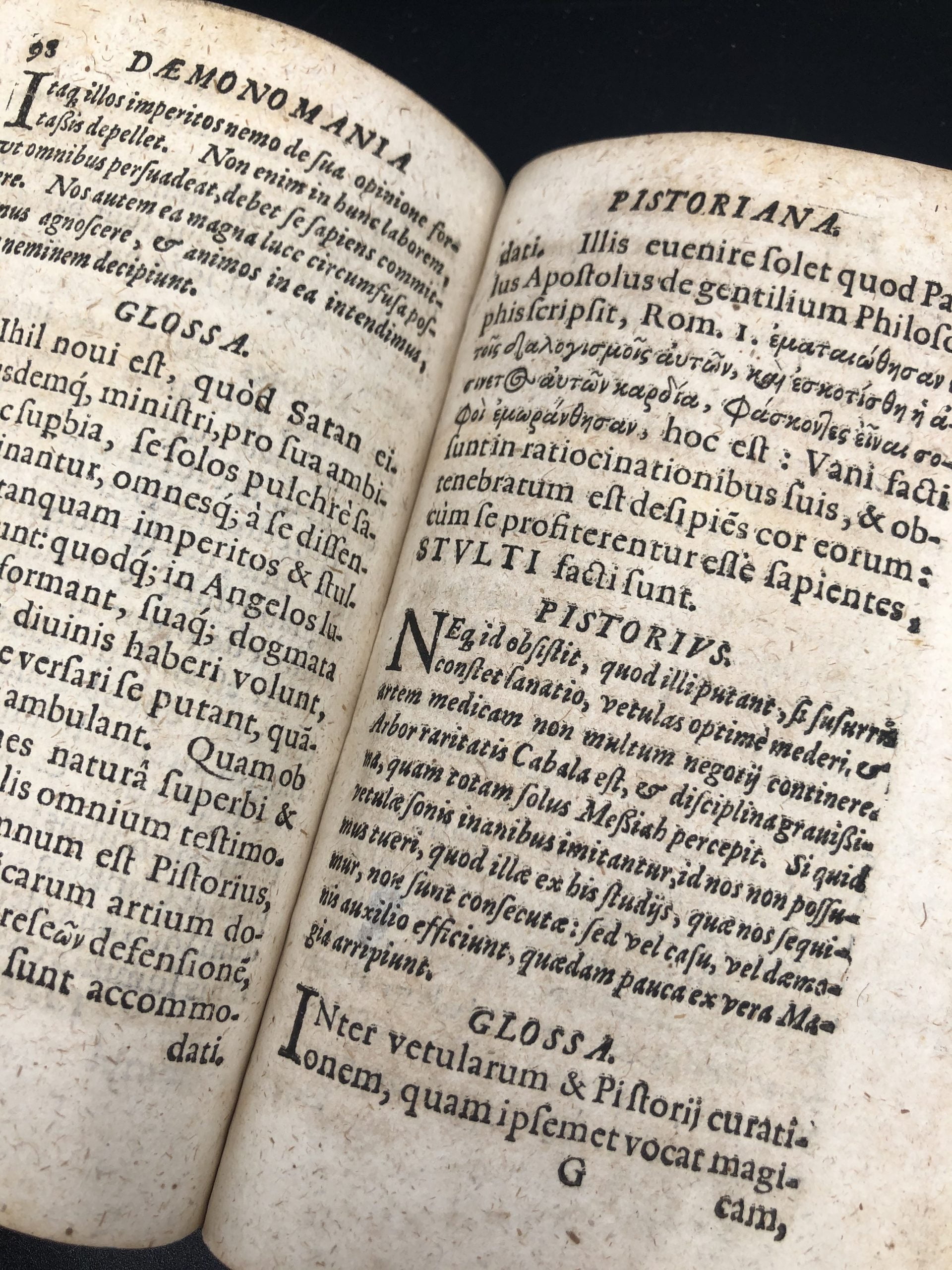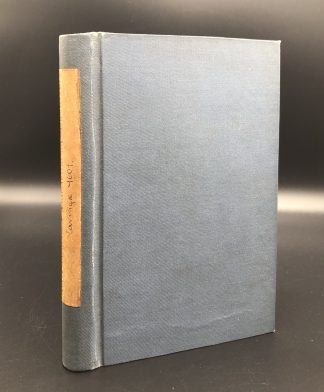PISTORIUS, Johann. HEILBRONNER, Jacob
KABBALAH, DEMONS AND MEDICINE
Daemonomania Pistoriana: magica et cabalistica morborum curandorum ratio
Lauingen, typis Palatinis, 1601£2,950.00
FIRST EDITION. 8vo. pp. (lii) 134. Roman letter, with Italic, occasional Hebrew. T-p with typographical border and ornament. Slight age browning (poor paper), lower outer corner of B 1 torn just touching catchword. A good copy in cloth boards c.1900 eps, paper label to spine, modern ex-libris of Emile Lafuma Voiron to fly.
The scarce first edition of this demonological-medical controversy on the Practical Kabbalah, between two important German theologians, one Catholic, the other Protestant. The German Johann Pistorius (1546-1608) was physician to Margrave Karl II of Baden-Durlach; in 1588, he converted from Lutheranism to Calvinism and later Catholicism. This edition features excerpt from ‘De arte cabalistica’ (Basel, 1587), on the Jewish mystic tradition and esotericism, which Pistorius wrote the year before his Catholic conversion, inspired by Reuchlin’s of 1517. In ‘De operatione’, the focus is on Practical Kabbalah, or the part concerning ‘white magic’: ways of making amulets and talismans, and the nature of angels and demons. In particular, it discusses Pistorius’s key observations on its use for treating illnesses. Each excerpt by Pistorius is followed by a ‘glossa’ devised to confute it, by the Lutheran theologian Jacob Heilbronner (1548-1618). Heilbronner begins with an introduction on the figure of the ‘magi’, often confused with astronomers or astrologers, but truly people ‘who entertain commerce with demons’. He even associates Pistorius with them: ‘a magus […] is very rapacious for money and honours, vices which everyone knows are shared by the obnoxious Pistorius’. Heilbronner considered Pistorius’s theories on the cabbalistic treatment of illnesses as black magic. The most important issue he sought to confute was the mystic power, especially the healing power, of words from the Scriptures, in the form, for instance, of charms used to treat people, even of the plague. Heilbronner’s criticism often extends to Practical Kabbalah as a whole—a ‘corruption of the Holy Scriptures, when from letters, numbers, figure, anagrams, conjunctions, spaces and similar details one draws allegorical meanings and mysteries’.
BL Ger. C17 P693; Durling C17, 9040; Graesse V, 306; Caillet IV, D2 3333: ‘très rare’; Bib. Esoterica 3673: ‘très rare’.In stock


